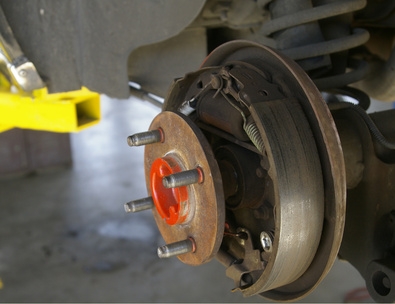
Brake pad linings wear down with each depression of the brake pedal. Unattended lining wear leaves the metal parts beneath to rub together and damage the brake system. The brakes work most efficiently with a certain amount of lining remaining on the brake pads. The pads should be replaced once the lining thickness falls below the recommend service height. Measure your brake pads regularly, or ask a qualified mechanic to check them for you to ensure the quality of the brakes.
Set the parking brake and raise the car at one corner with a jack. Remove any present hubcap and loosen the lug nuts with the lug wrench. Take the tire and rim off.
Remove the brake pads from the caliper by loosening the mounting bolts with an open end wrench, or by tapping out the retainer pins on disc brakes with a hammer.
Measure the linings by visually comparing them to the thickness of the plates backing them. Take a precise measurement with vernier calipers if the linings are thinner than the backing plates.
Measure the exact thickness of brake pad linings with vernier calipers. Close the jaws of the calipers onto the linings in several places to see if they fall below the minimum safe thickness at any point. Manufacturers specify safe pad thickness, but in general at least 3/16 of an inch is needed for responsive braking.